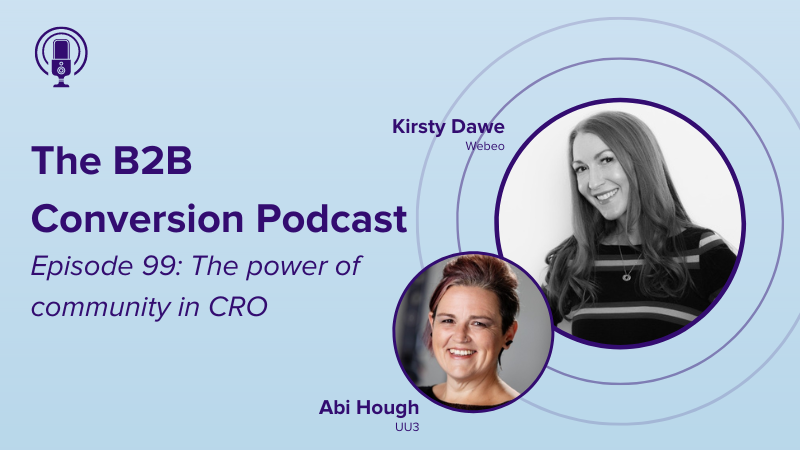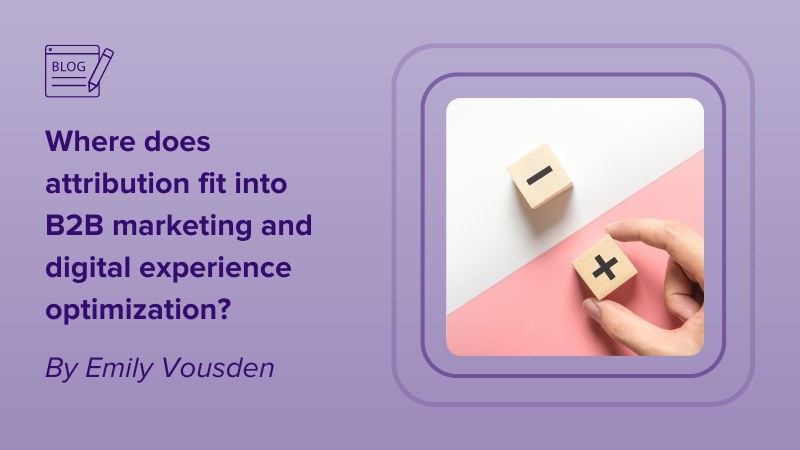One of the core focuses of a marketing dept is to increase website traffic. Whether you invest in content, SEO, paid search, email, social, or ABM, there’s always one reoccurring objective. And that’s to drive prospects to your website. Marketers have been tracking website visitors as a KPI for years, but the reality is, driving prospects to your website is only half the battle.
Once our ideal prospects have landed on our site, we face an even bigger challenge. Keeping them there and converting them into MQLs. If we don’t succeed, our hard work (and budget!) is wasted.
B2B websites are growing more complex, they are the number one marketing asset that the buyer visits at the beginning, middle, and end of their customer journey and through every stage of the funnel.
But our websites are in a crisis.
The average conversion rate for B2B websites is sitting at a mere 2%. Shockingly low when we consider the budget and resources we spend competing for website visitors. Our B2C counterparts are undoubtedly ahead of the game, averaging 3.2%. That may not sound like a huge difference, but for every 100 conversions you are getting, your B2C counterpart is getting 320. When you consider that most conversions in B2C are sales rather than leads, you can see the gap widening.
The smartest B2B organizations are investing in Conversion Rate Optimization, to improve their website, strengthen their marketing channels and drive their business towards sustainable growth.
What Is B2B Conversion Rate Optimization?
Conversion Rate Optimization is the process of improving your website to increase the percentage of visitors who take a desired call to action on your website. This could be requesting a demo, filling in a contact form, completing a purchase, or downloading a piece of content.
How can I calculate my conversion rate?
To calculate your conversion rate, divide the number of conversions by the number of visitors. Then multiply that number by 100 to get a percentage.


CRO equation
Where do I start?
So, now you understand what Conversion Rate Optimization is and how we can calculate our on-site conversion, we can start to build a clear plan to get started.
Like any well-thought-out marketing campaign. We start by understanding who our audience is, why they’re on our site, and what pain points they are trying to solve. B2B buyers don’t visit B2B websites for fun, they’ve landed on your website because they are trying to find a solution. And more often than not, our websites are not equipped to show them we can solve it. So, they bounce off, in search of your competitors and leave you with another visitor who didn’t convert.
The more we can understand our prospects, the better we can market to them. Our websites are swimming in data we can use to understand where and why our prospects aren’t converting. There are two types of data: Quantitative and Qualitative. You need to use both if you’re going to understand your audience and make improvements to your website.
Quantitative is your number crunching, so you can see which pages have the highest exit rate, where visitors are bouncing, and so on. Qualitative looks at detailed user research that can give you honest feedback from your website visitors through surveys, focus groups, etc. If Quantitative shows you where the problems are on your site, Qualitative can tell you how to fix them. It’s best not to skip on this stage – otherwise your CRO efforts won’t get off the ground.
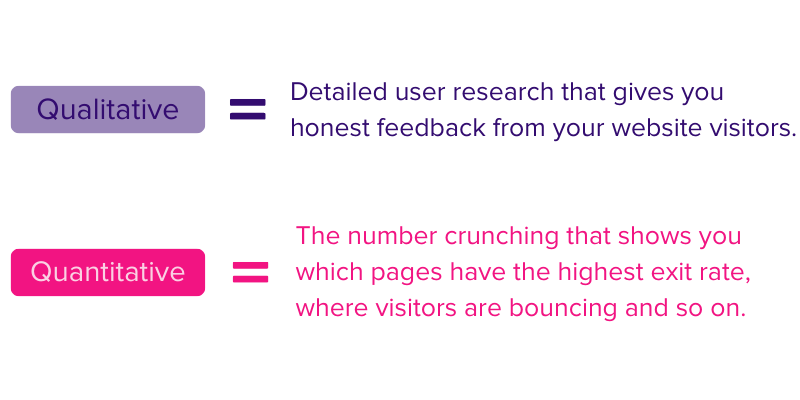

Qualitative and quantitative definition
Three B2B Conversion Rate Optimization tools to get you started:
1. Webeo
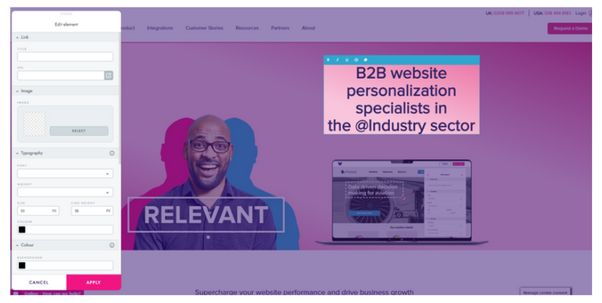

Webeo editor
What does it do? Webeo’s website personalization solution gives you the freedom to serve different experiences to different website visitors. Segment your audience and change content, images, CTA’s, and more, so your prospects only see the information relevant to them. Website personalization is key in creating a user-centric website, so your visitors stay on your site for longer and you convert more of them.
How much does it cost? Depends on website traffic. Get your quote today
2. Google Analytics
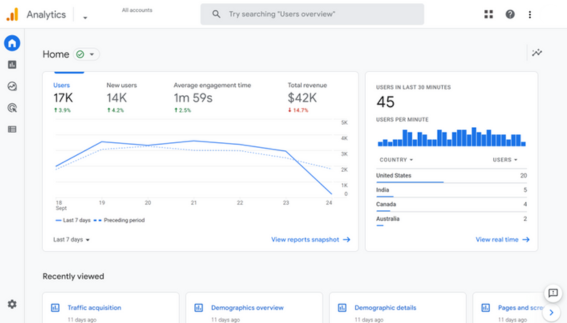

Google Analytics
What does it do? Google Analytics is a platform that collects data from your website to create reports that provide insights into your business. Using Google Analytics (GA), you can understand how many users are visiting your website, how engaged they are and what your best and worst-performing pages are.
How much does it cost? FREE (so there’s no excuses here!)
3. Hotjar
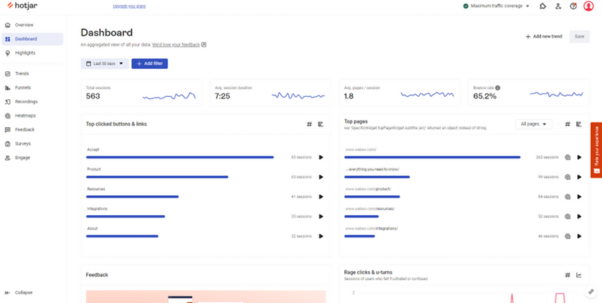

Hotjar Analytics
What does it do? Hotjar is another website analytics tool, but instead of just understanding the numbers related to your site performance, Hotjar shows heatmaps from your website visitors so you can understand the journey your website visitor takes. They also offer on-site surveys, so you can collect qualitative data.
How much does it cost? Business plan starts at €80 per month
FAQ’s
What are some common reasons why B2B websites have such low conversion rates compared to B2C websites?
The B2B buyer journey tends to more complex than B2C, with multiple stake holders at play. Personalization has been around for many years in B2C and is starting to become a hygiene factor in B2B too. Our buyers expect to be personalized to, lack of could result in a low conversion rate.
Are there any specific strategies or techniques recommended for B2B conversion rate optimization beyond using Webeo, GA, and Hotjar?
For a successful B2B CRO strategy, you should focus on any tools that support you with personalized content, a streamlined user experience, and AB testing. You need to be continuously monitoring every part of your strategy and adapt the strategies based on user feedback and market trends.
How can B2B marketers effectively balance between attracting a broad audience to their website and personalizing the user experience to increase conversion rates?
As a B2B marketer your SEO and CRO strategy should be working side by side. By attracting more visitors to your website, you can then implement tools such as Webeo to tailor the content shown based on the businesses characteristics. This means you can target a wide range of verticals, whilst also optimizing your site through personalized content, increasing onsite conversion.


